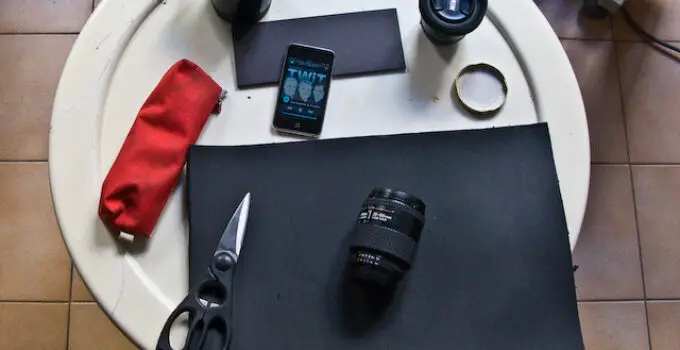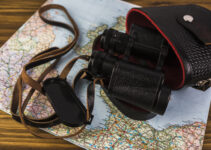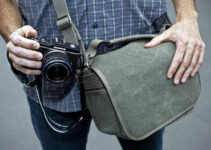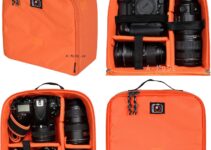Ever wondered how to make a camera lens bag? Protecting your expensive camera gear while adding a personal touch can be a fun and rewarding project. Let’s dive into the essentials of creating your custom camera lens bag.
In this guide, you’ll learn how to select the right materials, measure and cut fabric, and sew the pieces together. Expert tips from renowned photographers ensure you get a professional finish. You’ll be ready to craft a bag that meets your specific needs.
Ready to get started? Whether you’re a seasoned DIY enthusiast or a beginner, this step-by-step tutorial will make the process simple and enjoyable.
Let’s create the perfect home for your lenses!
Here how to make a camera bag waterproof?
What is camera lens bag?
A camera lens bag is a specialized accessory designed to protect and carry camera lenses.
These bags provide padded compartments tailored to fit different sizes and types of lenses, ensuring they are safe from dust, scratches, and impacts during transport.
Often made from durable, weather-resistant materials, camera lens bags can feature additional storage pockets for accessories like lens caps, filters, and cleaning cloths.

They come in various forms, such as pouches for single lenses, modular inserts for larger camera bags, and standalone cases that can be worn over the shoulder or attached to a belt.
The key function of a camera lens bag is to offer photographers a convenient and secure way to carry their lenses, whether traveling, hiking, or simply moving between shoots.
By keeping lenses organized and protected, these bags help photographers maintain their equipment in optimal condition.
Here, how to make a camera bag at home.
Do you need a camera lens bag as a photographer?
As a photographer, having a camera lens bag is highly beneficial, though not strictly essential.
A camera lens bag provides specialized protection and organization for your lenses, which are often costly and delicate.
The padded compartments safeguard lenses from dust, scratches, and impact, reducing the risk of damage during transport.
Additionally, these bags help keep your equipment organized, making it easier to access the right lens quickly during a shoot.
For photographers who frequently travel or work on location, a lens bag offers convenient portability and ensures that all necessary gear is readily available.
Even for those who primarily shoot in studio settings, a lens bag can be useful for storing and protecting lenses when not in use.
While you can manage without one, a dedicated camera lens bag enhances the safety, organization, and ease of transporting your valuable lenses, ultimately supporting better workflow and equipment longevity.
Can you make your own camera lens bag?
Yes, you can make your own camera lens bag. Creating a DIY lens bag involves using materials that provide protection and durability.
Start with a sturdy, weather-resistant fabric like canvas or nylon for the outer layer. For padding, use foam or quilted fabric to cushion the lenses against impacts.
Cut the fabric to your desired dimensions, allowing extra space for seams and padding.
Sew the outer fabric and padding together, forming a pouch or case. Add dividers using the same padded material to create compartments for different lenses.
Include a secure closure, such as a zipper or Velcro, to keep the lenses safe inside. Adding a strap or handles can improve portability.
Customizing the bag with extra pockets for accessories like lens caps, filters, and cleaning cloths can enhance its functionality.
Making your own camera lens bag allows for personalization to fit specific needs and preferences while potentially saving money.
Here, is camera bag allowed in cabin baggage?
Things to know before making a camera lens bag
Before making a camera lens bag, consider the following:
- Lens Dimensions: Measure your lenses to ensure the bag’s compartments are appropriately sized for a snug fit, providing optimal protection.
- Material Choice: Select durable, weather-resistant fabrics like nylon or canvas for the exterior and soft, padded materials like foam or quilted fabric for the interior to safeguard against impacts and scratches.
- Padding: Adequate padding is crucial for protecting lenses from drops and bumps. Ensure the padding is thick enough to absorb shocks but not too bulky.
- Compartments: Plan the layout for compartments to organize multiple lenses and accessories. Dividers should be adjustable or customizable to accommodate different lens sizes.
- Closure: Use secure closures like zippers, Velcro, or buckles to keep lenses safe inside the bag.
- Portability: Consider adding straps or handles for ease of carrying. Think about how you will transport the bag during shoots.
- Extra Features: Include pockets for small accessories like lens caps, filters, and cleaning cloths to enhance functionality.
By addressing these factors, you can create a functional and protective camera lens bag tailored to your specific needs.
How to make a camera lens bag?
To make a camera lens bag, follow these steps:
- Materials Needed: Gather durable, weather-resistant fabric (like nylon or canvas), soft padding material (foam or quilted fabric), a zipper or Velcro for closure, and a sewing kit or sewing machine.
- Measure and Cut: Measure your lenses and cut the fabric to create an outer shell and inner lining. Allow extra space for seams and padding. Cut additional pieces for internal dividers and pockets.
- Sew the Outer Shell: Sew the outer fabric pieces together, leaving the top open. This forms the bag’s exterior.
- Add Padding: Attach padding to the inner lining for protection. Sew the padding into place.
- Create Dividers: Sew padded dividers and attach them inside the bag to create compartments for each lens.
- Attach Closure: Sew a zipper or Velcro strip along the top opening to secure the bag.
- Add Straps: Attach handles or straps for easy carrying.
- Final Assembly: Sew the inner lining with padding into the outer shell, ensuring all seams are secure.
By following these steps, you can create a custom camera lens bag that offers protection and convenience.
Here, how to make a insulated camera bag?
9 steps to make a camera lens bag
1. Gather Materials
Collect all necessary materials: durable, weather-resistant fabric like nylon or canvas for the outer shell, soft padding material such as foam or quilted fabric for the interior, a sturdy zipper or Velcro for the closure, and a sewing kit or sewing machine.
Additional materials might include webbing for straps and thread that matches your fabric.
2. Measure and Cut Fabric
Measure your lenses to determine the dimensions for the bag and its compartments.
Add a few extra inches to each measurement to account for seams and padding thickness.
Cut the outer fabric and inner padding according to these measurements. Also, cut smaller pieces for internal dividers and accessory pockets if desired.
3. Sew Outer Shell
With the outer fabric pieces cut, sew them together to form the shell of the bag.
Start by sewing the sides and bottom together, leaving the top open. Ensure the seams are strong, as this will be the main structure of the bag.
4. Prepare Padding
Cut the padding material to match the dimensions of the outer shell. If using foam, consider a thickness that offers ample protection without making the bag too bulky.
Quilted fabric can provide a softer interior. Sew the padding pieces together to form a lining that fits inside the outer shell.
5. Attach Padding to Lining
Sew the padding to the inner lining fabric.
This step ensures the padding stays in place and provides consistent protection. Make sure the padding is evenly distributed and secured well to prevent shifting.
6. Create and Sew Dividers
Cut and sew padded dividers that match the interior height of the bag. These dividers can be adjustable if desired, using Velcro strips for flexibility.
Sew the dividers into the lining to create individual compartments for each lens. Ensure these are snug to keep lenses from moving.
7. Install Closure
Sew a zipper or Velcro strip along the top edge of the bag to create a secure closure.
If using a zipper, reinforce the ends to prevent it from coming loose. Velcro strips should be sewn securely to handle repeated use.
8. Add Straps or Handles
Attach webbing or fabric strips to create handles or straps. These can be sewn to the sides of the bag for hand-carrying or made adjustable for shoulder carrying.
Reinforce these attachment points to handle the weight of the lenses.
9. Final Assembly
Place the padded lining with dividers inside the outer shell.
Ensure the lining fits snugly and aligns properly. Sew the lining into place, making sure all seams are secure. Test the bag with lenses inside to ensure compartments fit well and the closure works smoothly.
By following these detailed steps, you can create a custom camera lens bag that provides excellent protection, organization, and convenience for your photography equipment.
Here, does ospery make a camera bag?
How do you keep a camera lens in a bag?
To keep a camera lens in a bag safely, follow these steps:
- Use Proper Padding: Ensure the bag is well-padded to protect the lens from impacts. Foam inserts or quilted fabric can absorb shocks and prevent scratches.
- Secure Compartments: Place the lens in a dedicated, snug-fitting compartment. Many camera bags have adjustable dividers to fit lenses of various sizes securely.
- Lens Caps On: Always keep the front and rear caps on the lens to protect the glass elements from dust and damage.
- Organize by Size: Arrange lenses by size and type to prevent them from knocking against each other. Heavier lenses should be placed at the bottom for better weight distribution.
- Close Properly: Ensure the bag is fully closed with zippers or Velcro to prevent lenses from falling out.
By following these guidelines, you can keep your camera lenses safe and organized while in a bag.
How do you pack a camera lens?
1. Clean the Lens
Before packing, clean your camera lens thoroughly. Use a soft microfiber cloth to remove dust and smudges from the lens surface.
Cleaning ensures that no dirt or particles get trapped in the bag, which could scratch the lens glass during transport.
Also, check and clean the lens caps to prevent transferring dirt.
2. Attach Lens Caps
Secure both the front and rear lens caps on the lens. These caps protect the glass elements from scratches, dust, and accidental damage.
Make sure the caps are properly fitted and not loose. This step is crucial for safeguarding the most delicate parts of your lens.
3. Use a Protective Pouch
Place the lens in a protective pouch if you have one. These pouches provide an additional layer of padding and protection against bumps and impacts.
They are often made of soft, cushioned materials like neoprene or microfiber, which help to absorb shocks and prevent scratches.
4. Position the Lens in the Bag
Place the lens in a dedicated compartment within your camera bag. Many camera bags have customizable, padded dividers that you can adjust to fit the size of your lens snugly.
Ensure the lens fits securely and doesn’t move around. For added security, position heavier lenses at the bottom to maintain a lower center of gravity.
Here, how to make a backpack camera bag?
5. Avoid Overpacking
Do not overcrowd the bag. Overpacking can put pressure on the lenses and increase the risk of damage.
Ensure there is enough space for each lens to be stored without touching other equipment. This helps in preventing accidental knocks and maintaining the integrity of the lenses.
6. Add Extra Padding
If the bag lacks sufficient padding or if you’re packing extra-sensitive lenses, add extra padding around the lenses.
You can use foam inserts, additional pouches, or even soft clothing items to cushion the lenses further.
This step is particularly important if you’re traveling or the bag may experience rough handling.
7. Secure the Bag
Close the camera bag securely using zippers, Velcro, or buckles. Double-check that the closures are fully fastened to prevent the bag from opening accidentally.
If your bag has external straps or buckles, use them to tighten the load and keep everything in place. Ensure the bag is comfortable to carry, with weight evenly distributed, reducing the risk of dropping it.
By following these steps, you can effectively pack your camera lens, ensuring it remains protected and ready for use.
This method helps prevent damage and keeps your lens in optimal condition for capturing high-quality images.
Conclusion:
Making a camera lens bag involves selecting durable fabric, adding padding for protection, and incorporating compartments for organization.
Sewing skills are essential for assembling the bag with secure stitching.
The final product should ensure easy access, portability, and robust protection for the lenses, combining functionality with a personal touch.







